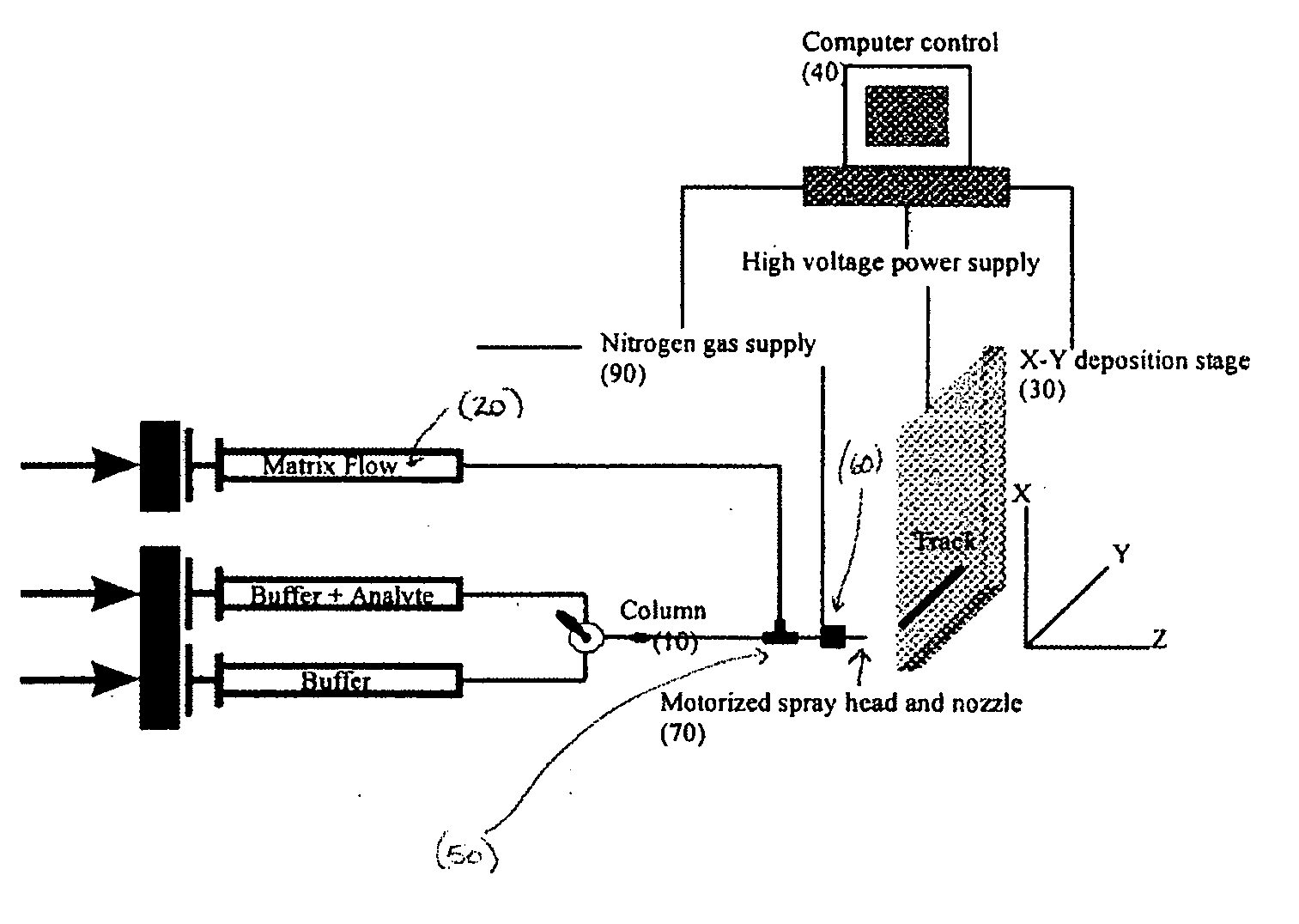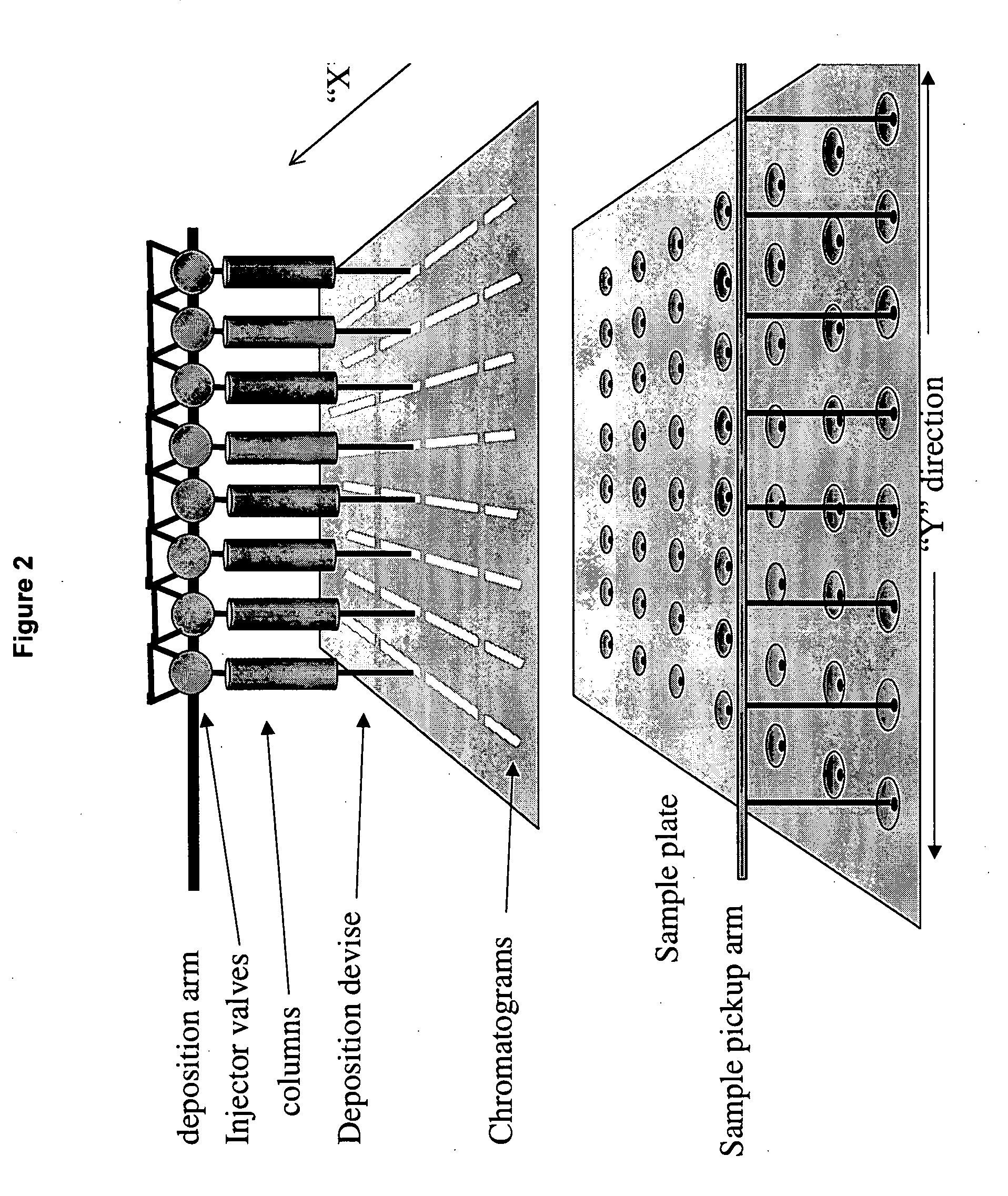Frontal affinity chromatography/MALDI tandem mass spectrometry
a technology of affinity chromatography and tandem mass spectrometry, which is applied in the field of compound analysis methods, can solve the problems of limited versatility of methods, significant non-selective binding, and one mode of analysis per method, and achieve the effects of reducing the number of steps
- Summary
- Abstract
- Description
- Claims
- Application Information
AI Technical Summary
Benefits of technology
Problems solved by technology
Method used
Image
Examples
example 1
FAC / ESI-MS / MS
[0056]FIG. 5 shows FAC / ESI-MS / MS traces obtained for elution of mixtures of DHFR inhibitors and control compounds through DGS / PEO / APTES columns containing no protein (Panel A) or an initial loading of 25 pmol of active DHFR (Panel B). The blank column shows the expected breakthrough of all compounds in the first few minutes (between 1 and 4 min), although both pyrimethamine and trimethoprim, which are cationic, are retained slightly longer than the anionic compounds fluorescein and folic acid. The retention, which is present when using 2 mM ammonium acetate buffer, is indicative of non-selective interactions between the cationic compounds and the anionic silica column, showing that normal-phase silica chromatography is not fully suppressed at low ionic strength. Panel B shows significant retention of the two DHFR inhibitors, trimethoprim (Kd=4 nM, elution time of 22 min) and pyrimethamine (Kd=45 nM, retention time 28.5 min), less retention of a weak substrate (folic ac...
example 2
FAC-MALDI / MS / MS
[0058] (a) Optimization of MALDI MRM Transitions: A useful feature of off-line MS analysis by MALDI is the ability to rerun sample tracks multiple times to allow different MS data to be acquired, which allows for optimization of MRM parameters. FIG. 6 shows a MALDI Q1 spectrum of a mixture of the four target analytes (folic acid, pyrimethamine, trimethoprim and fluorescein) after appropriate background subtraction to reduce CHCA background signals. Peaks are evident for each of the four compounds; however, the primary peak for folic acid occurs at m / z 295 rather than at m / z 442, indicative of a fragment ion being the primary species present for this compound. Focusing on folic acid, product ion scans obtained from the same track using the m / z 295 parent ion clearly show a maximum peak at m / z 176, with an intensity of 5.5×105 cps. The most abundant product ion obtained from the m / z 442 parent ion was only 15% as intense as the m / z 295→m / z 176 ion pair. This is in cont...
PUM
 Login to View More
Login to View More Abstract
Description
Claims
Application Information
 Login to View More
Login to View More - R&D
- Intellectual Property
- Life Sciences
- Materials
- Tech Scout
- Unparalleled Data Quality
- Higher Quality Content
- 60% Fewer Hallucinations
Browse by: Latest US Patents, China's latest patents, Technical Efficacy Thesaurus, Application Domain, Technology Topic, Popular Technical Reports.
© 2025 PatSnap. All rights reserved.Legal|Privacy policy|Modern Slavery Act Transparency Statement|Sitemap|About US| Contact US: help@patsnap.com



